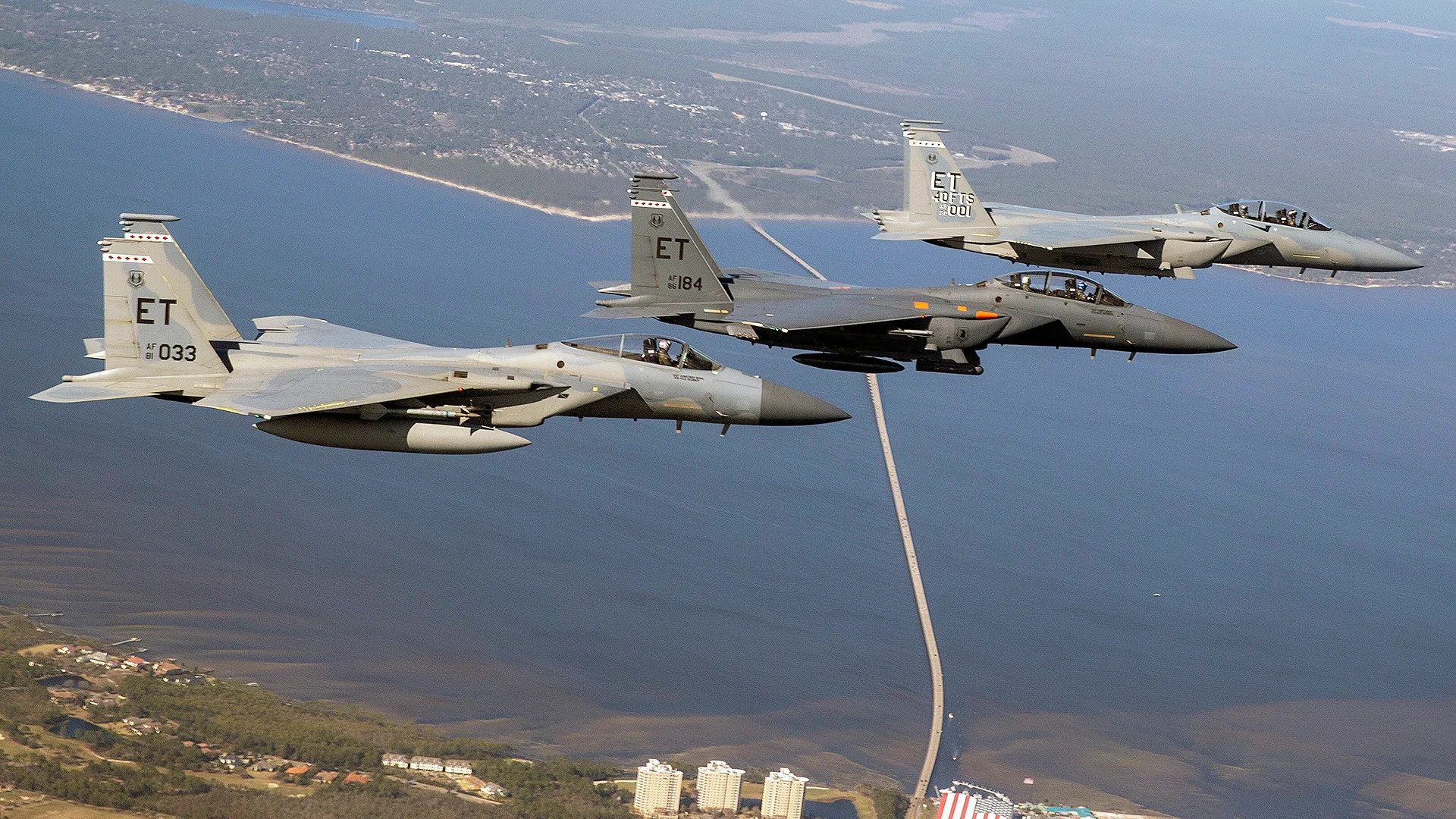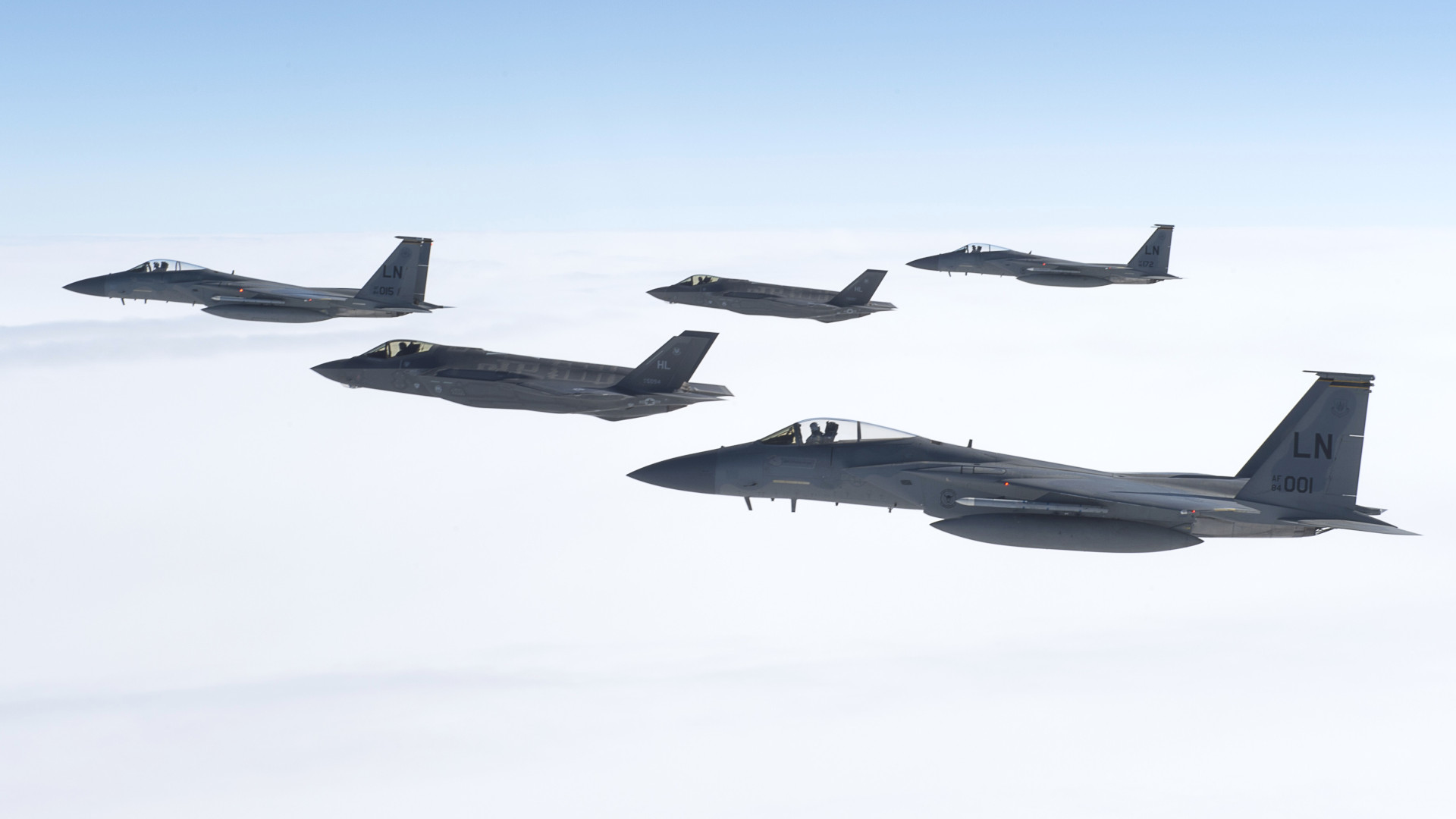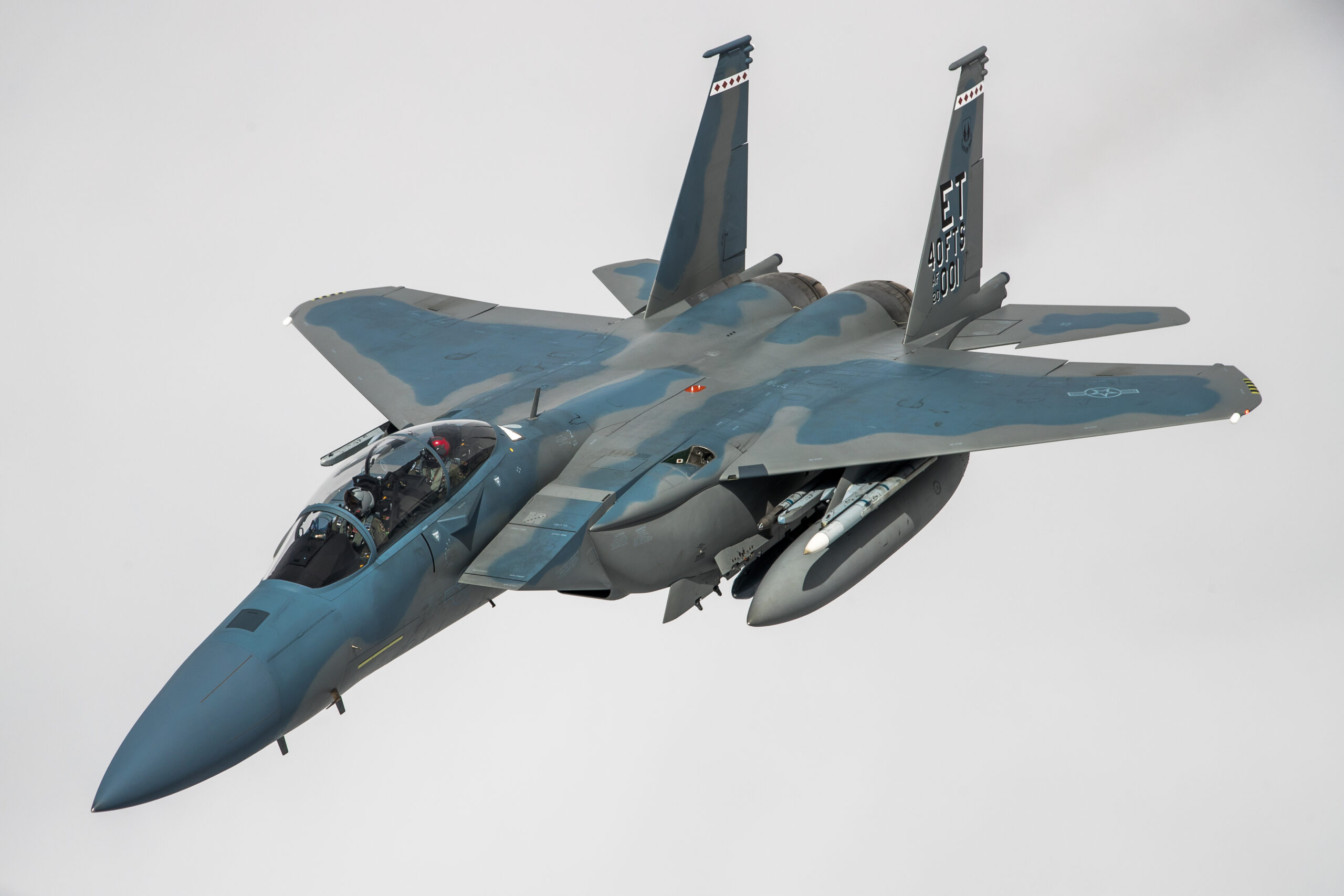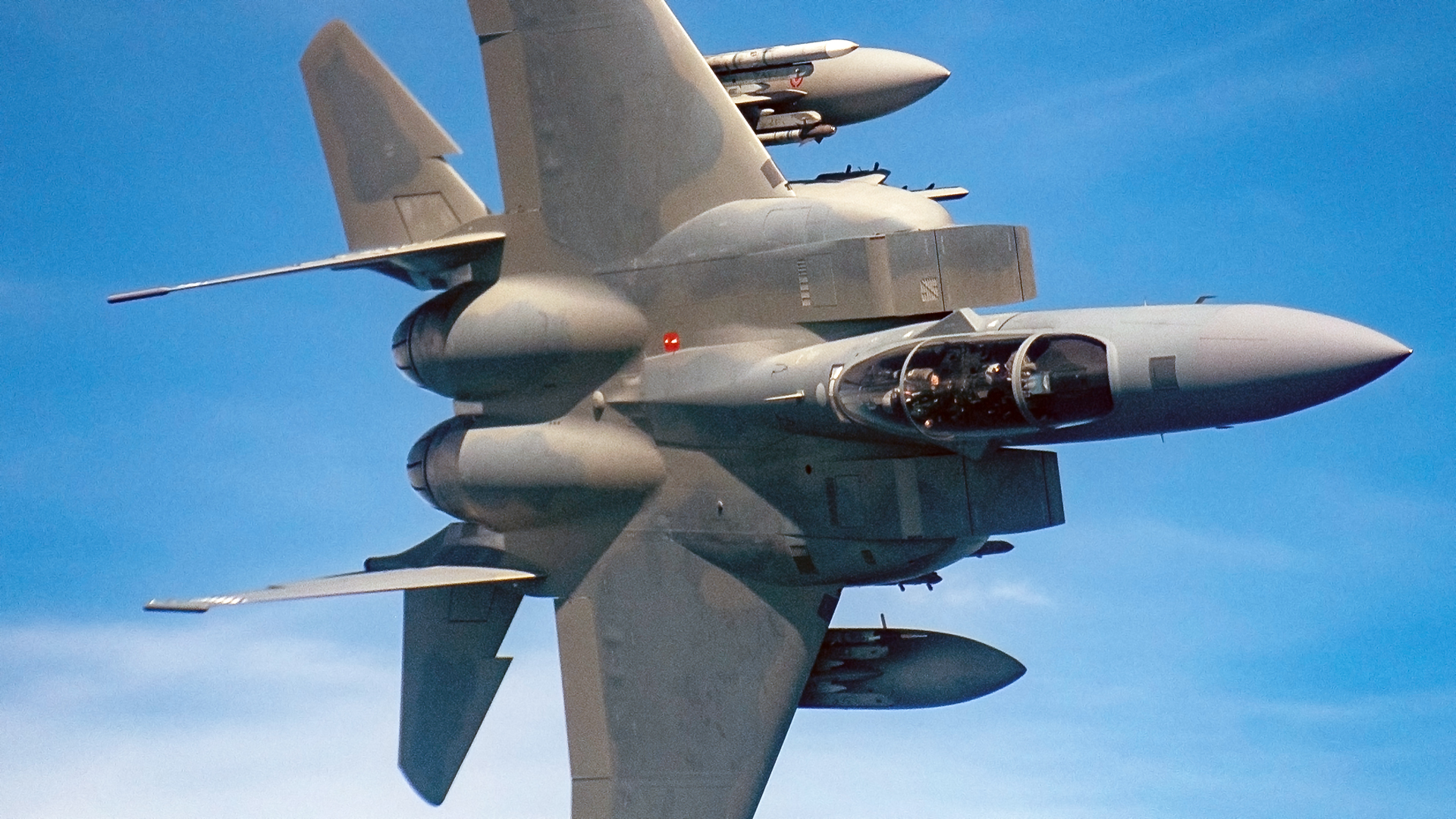The U.S. Air Force’s proposed budget for the 2024 Fiscal Year includes a request for funds to buy 24 more F-15EX Eagle II fighter jets. This would bring the total planned fleet size up to 104 aircraft. Last year, the service had proposed purchasing just 80 Eagle IIs, down from the original plan to acquire at least 144 of them. The War Zone just recently highlighted how a fleet of only 80 F-15EXs would make little practical sense.
Though the exact distribution of the F-15EXs remains to be seen, a fleet of 104 Eagle IIs should allow for the replacement of the Air Force’s remaining F-15C/D Eagles assigned to Air National Guard (ANG) units. As it stands now, the California, Oregon, Louisiana, and Massachusetts ANGs each have a single operational squadron equipped with Eagles. These units are tasked with highly important mission of protecting the ocean approaches to the lower 48 states. There is also a schoolhouse unit within the Oregon ANG that would provide training for the F-15EX community.

The Air Force’s stated plan now is to otherwise make up the difference in the divestment of the entire F-15C/D Eagle fleet through the acquisition of F-35A Joint Strike Fighters. The Air Force has already been moving to supplant Eagles that had been assigned to forward-deployed active duty units in the United Kingdom with F-35As. Two additional Eagle squadrons in Japan have been shuttered without immediate replacements, with rotational deployments of jets, including F-22 Raptor stealth fighters, taking their place. The service has also moved to shut down F-15C/D-related activities at its prestigious Weapons School.
The Florida Air National Guard is also transitioning from the F-15C/D to the F-35A, which remains a puzzling move seeing the rest of the National Guard Eagle squadrons are getting F-15EXs.

At the same time, formal divestment of F-15C/Ds is continuing. Prior to this final official drawdown in the F-15C/D fleet, the Air Force had approximately 220 F-15C/Ds still in inventory across the service, including in active duty and ANG units. It asked to divest 67 of these jets in its 2023 Fiscal Year proposed budget, so that number has dropped significantly since then as the F-15C/D fleet is slowly dissolved.
In its 2024 Fiscal Year budget request, the Air Force has asked to divest another 57 F-15C/Ds as part of these ongoing retirement plans for the type.
There is always the possibility that Congress, which has the final say over the annual U.S. military budget, as a whole, could decide to force the Air Force to acquire more F-15EXs, either in the 2024 Fiscal Year or in the future. Legislators have a long history of blocking proposed cuts to military aircraft fleets or other programs, as well as adding additional funds to them above what the services actually request. However, as noted, lawmakers did not move to outright alter the Air Force’s even more substantially truncated plans for the Eagle II fleet last year.

The uncertainty that existed around what would happen at least to Air National Guard F-15C/D units seems to be settled at this time, but there are still unknowns – principally if Kadena Air Base will indeed get F-35s as the Pentagon seems to be indicating. Above all else, a fleet of 104 aircraft is better than 80, but it is still remarkably small. Whether such a small ‘fleet within a fleet’, requiring its own schoolhouse, makes sense remains up for debate. This is especially the case as the Air Force has been focused on reducing this kind of force structure arrangement while shrinking its overall tactical air combat mass with each consecutive budget, even as threats abroad grow.
Regardless, at least we now have clarity on the Air Force’s F-15EX plans and its final targeted fleet size.
Contact the author: joe@thedrive.com
